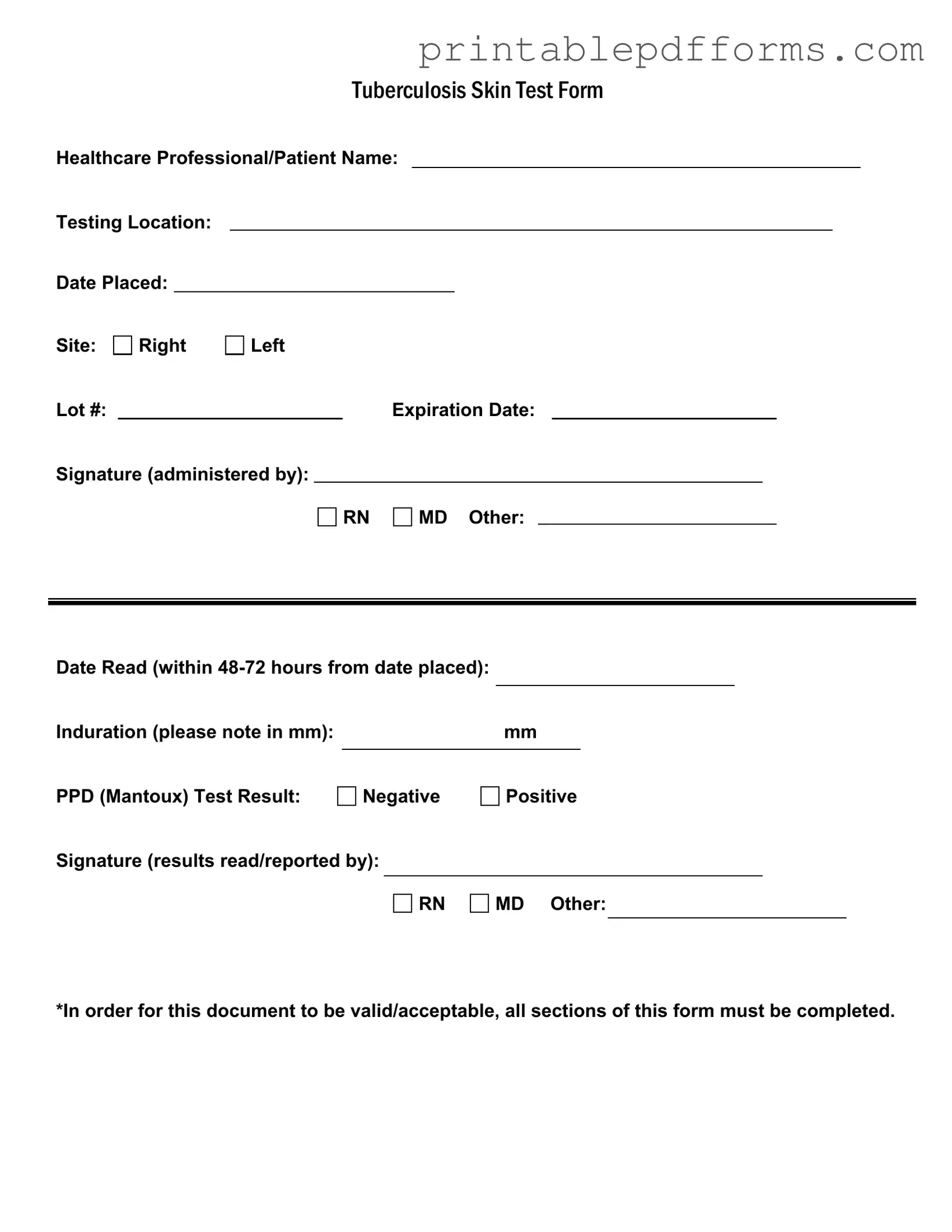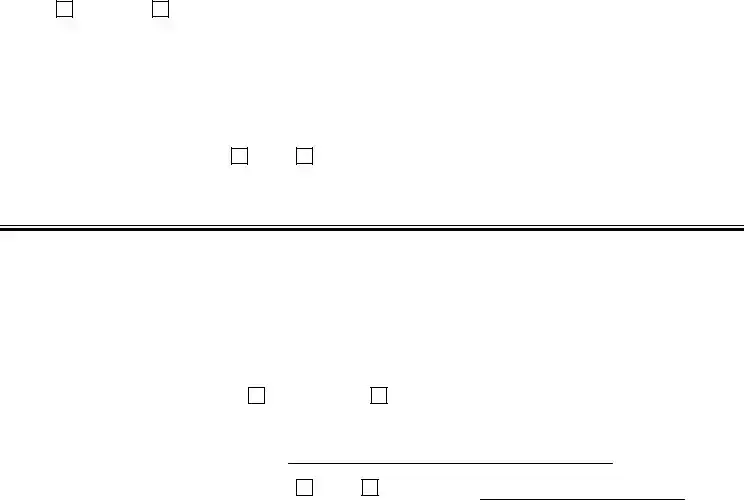Fill a Valid Tb Test Form
The Tuberculosis Skin Test Form is a crucial document used to record essential details regarding the administration and results of the tuberculosis skin test, also known as the PPD test. It includes fields for the healthcare professional's name, testing location, and results, ensuring that all necessary information is captured accurately. To ensure compliance and validity, it is vital that every section of this form is thoroughly completed.
To fill out the Tb Test form, please click the button below.
Create This Document Online

